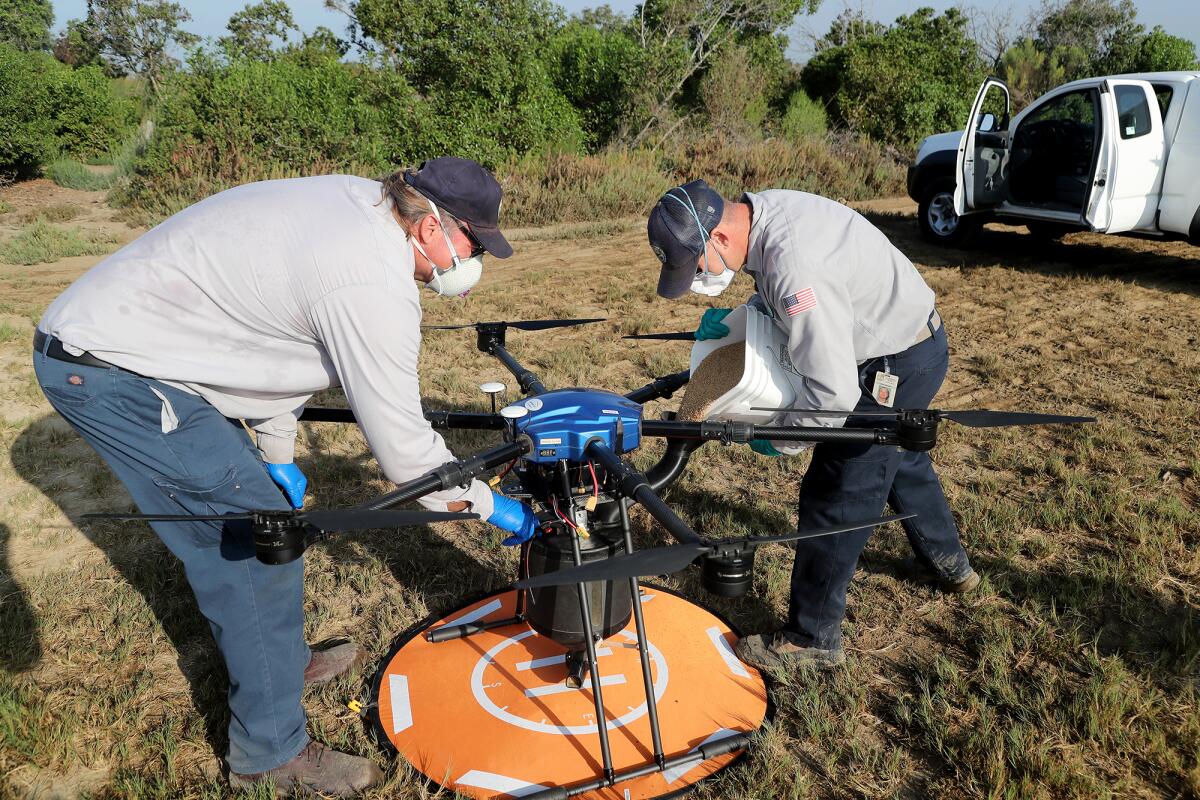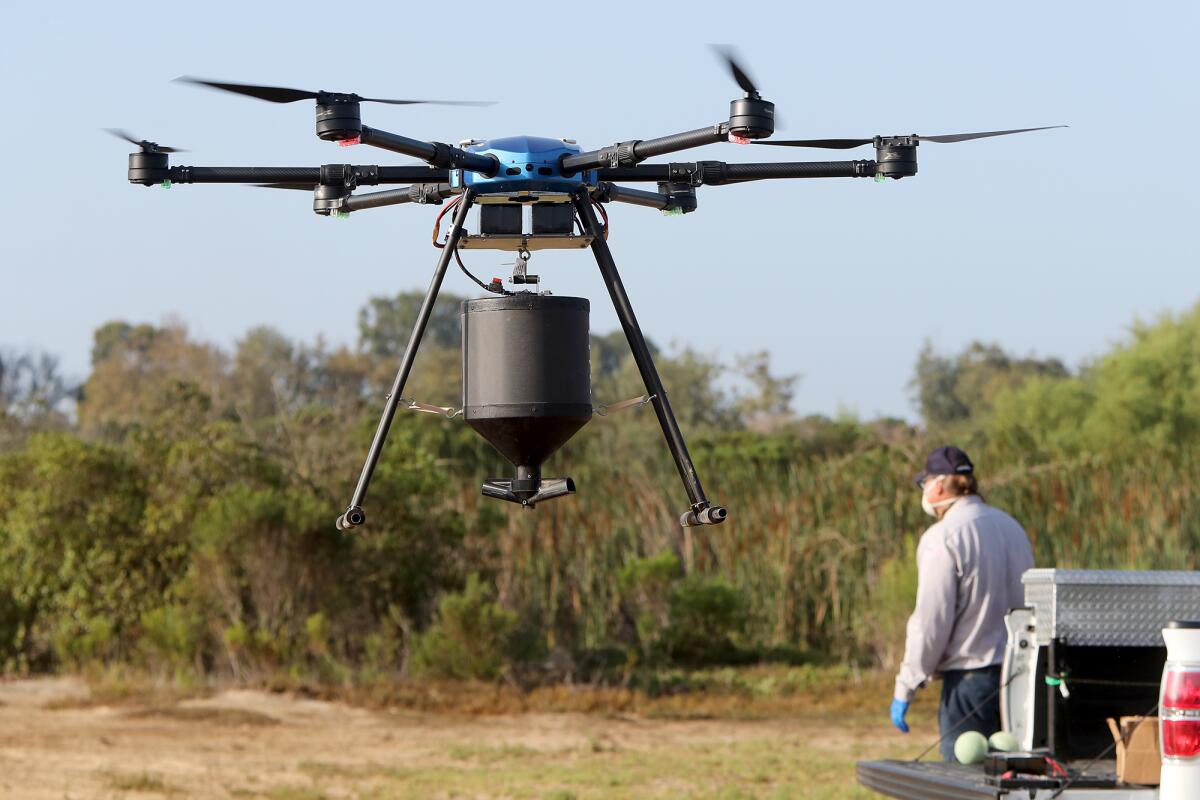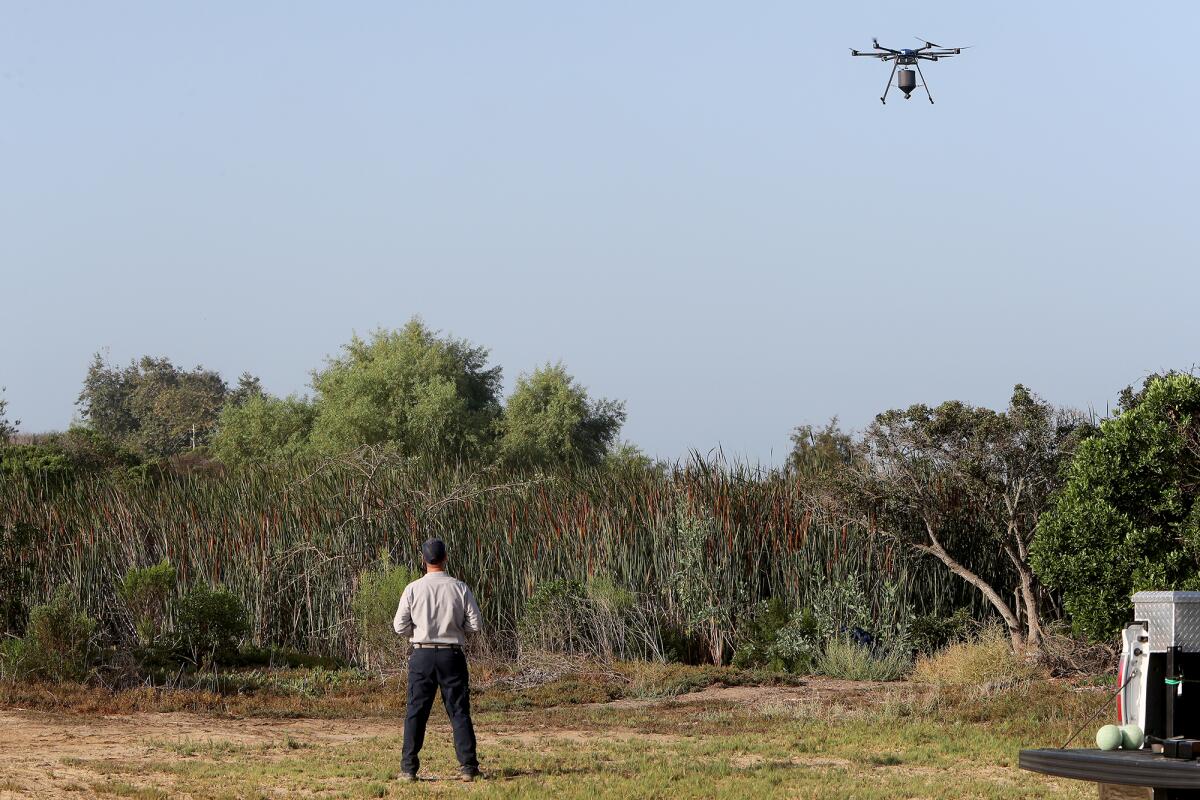O.C. Vector Control launches air strike against mosquitoes, dropping larvicide via drone

- Share via
A quiet Thursday morning outside Huntington Beach’s Harriett Wieder Regional Park hardly discloses the carnage that is about to unfold, as two Orange County Mosquito and Vector Control District employees ready a drone for combat.
Roughly 20 pounds of a granular substance is poured into a metal cannister affixed to the body of the aircraft. It contains VectoBac GS — a bacteria strong enough to stop mosquito larvae from ever reaching adulthood.
For the record:
10:01 a.m. Sept. 10, 2021An earlier version of this story indicated Aedes aegypti mosquitos can spread West Nile virus to humans. They can spread other diseases, but have not been found to infect humans with West Nile.
With the flick of a switch, the drone powers on and begins its ascent over a nearly 3-acre portion of the north end of Wieder Park, located near 1,400 acres of undeveloped wetlands preserved in the Bolsa Chica Basin State Marine Conservation Area.
The device is the newest tool in an arsenal designed to control mosquitoes and the diseases they carry, particularly West Nile virus, according to district spokeswoman Lora Young.

Young said the district began using drones in 2019 to surveil areas workers could not access on foot, including environmentally sensitive wetlands and areas with heavy brush.
Last year one aircraft was outfitted with larvicide and now, well into the 2021 mosquito season, it makes appearances at Wieder Park, Costa Mesa’s Fairview wetlands, the San Joaquin Marsh near UC Irvine and water recycling basins in Santa Margarita when trap counts are high.
Air drops have a few advantages over the gas-powered backpacks typically used to perform applications in hard-to-reach areas, which tend to be much noisier.

“The technology allows us a more efficient way and more environmentally sensitive way to provide that same application without having to go into brush or disrupt any habitat,” Young said. “With the drone, we can fly overhead and treat all the water sources we see.”
The drone flies in routes pre-programmed into its navigation system but operators, who’ve been FAA certified to fly the craft and have logged practice hours for the district, can release the larvicide on demand.
Young said this year’s mosquito season, which typically runs from March through October or November, has been relatively quiet. As of Sept. 3, no dead birds had tested positive for the virus, and no cases of human infection have been reported in Orange County so far this year.
“Right now, it’s looking like it’s going to be a pretty low West Nile virus year,” Young said. “Our mosquitoes are a different concern.”
OCMVCD has reported 22 mosquito samples have tested positive for West Nile virus, including nine in Anaheim, six in Fullerton, four in Cypress, two in Buena Park and one in La Palma, according to district figures.
As populations of Aedes aegypti mosquitos, which proliferate in the daytime and can spread diseases to humans, continue to rise year after year, the county’s Vector Control District reminds residents to eliminate standing water from their homes wherever they may find it.
All the latest on Orange County from Orange County.
Get our free TimesOC newsletter.
You may occasionally receive promotional content from the Daily Pilot.




